Dragon fruit (Hylocereus spp.), a tropical cactus prized for its vibrant appearance and sweet, exotic flavor, is surprisingly resilient — yet not immune to issues. One of the most common and devastating problems dragon fruit growers face is root rot, a condition that can destroy a plant from the ground up, often without warning.
Root rot can severely impact the health and productivity of your dragon fruit, delaying growth, reducing fruit yield, or even killing the plant entirely. Fortunately, this issue is largely preventable with the right knowledge and care.
In this guide, you’ll discover the top tips to prevent dragon fruit root rot, supported by scientific principles, gardening best practices, and practical insights for both novice and experienced growers.
What is Dragon Fruit Root Rot?
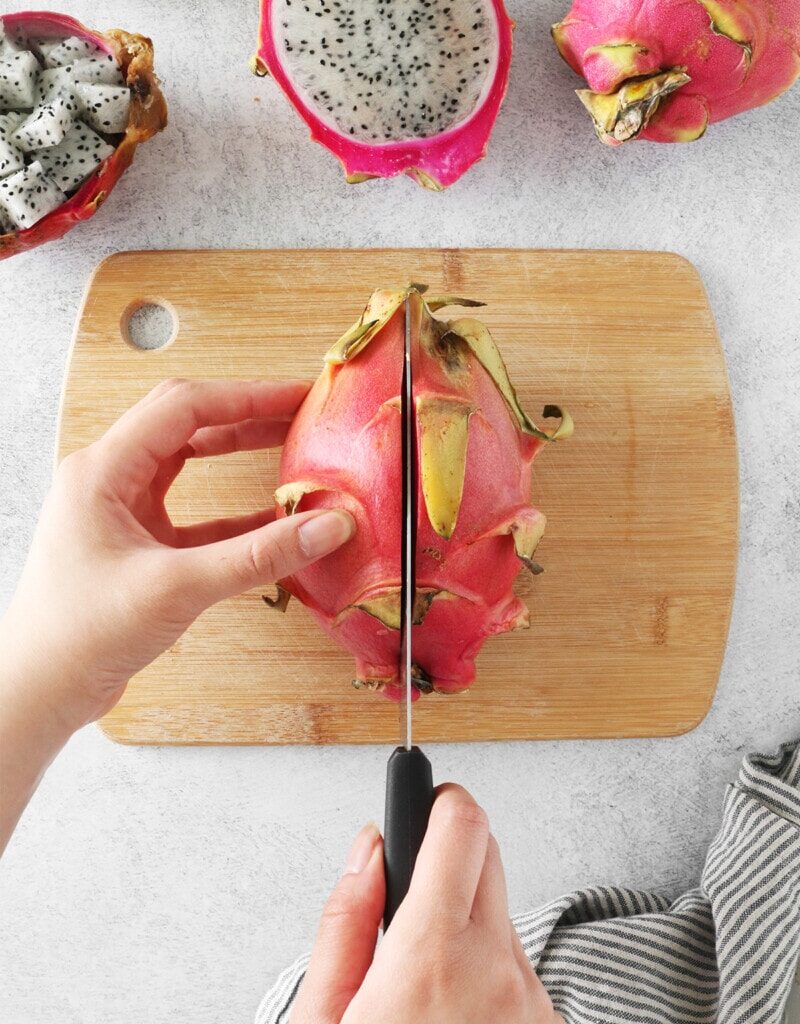
Root rot is a fungal or bacterial infection that typically sets in when the plant’s roots are exposed to excess moisture for prolonged periods. The roots suffocate due to lack of oxygen, which opens the door for pathogens like Phytophthora, Fusarium, or Pythium to take hold. Once infected, the roots become mushy, brown, and incapable of absorbing nutrients.
1. Use Well-Draining Soil
Why It Matters:
Dragon fruit is a cactus—its roots don’t tolerate soggy soil. In dense, compacted, or clay-like soil, water accumulates around the roots, creating ideal conditions for rot.
How to Prevent:
- Choose cactus or succulent potting mixes specifically designed for excellent drainage.
- You can make your own blend using:
- 2 parts coarse sand
- 1 part perlite or pumice
- 1 part organic compost
- Ensure the pH remains between 6.0 and 7.0 for optimal root health.
2. Ensure Proper Drainage in Containers
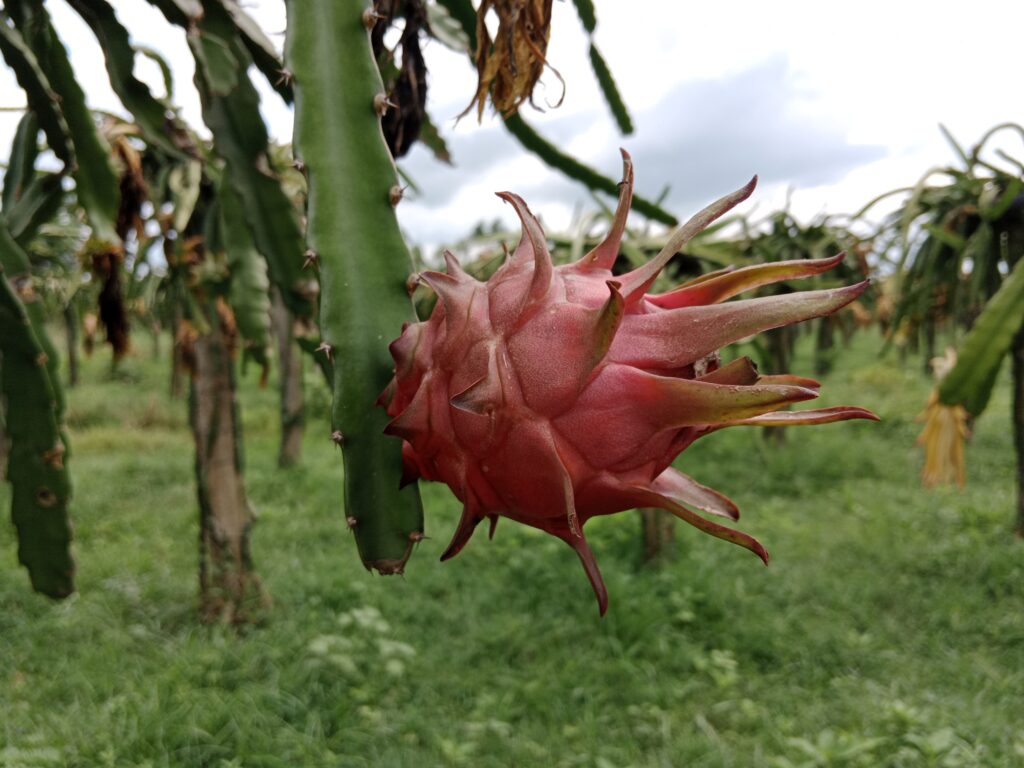
Why It Matters:
Even if you have well-draining soil, if your container doesn’t allow water to escape, it can create a waterlogged environment.
How to Prevent:
- Use pots with at least 3-4 drainage holes at the bottom.
- Elevate pots slightly above the ground using pot feet, bricks, or risers.
- Avoid decorative pots without holes unless you double-pot (place a plastic pot with holes inside).
3. Build Raised Beds for Ground Planting
Why It Matters:
In-ground planting can be risky in regions with heavy rainfall or poorly draining soil.
How to Prevent:
- Build raised garden beds or mounds at least 12–18 inches high.
- Use gravel or crushed rock at the bottom layer to assist drainage.
- Apply a layer of mulch around the base, but not touching the stem, to prevent splashing and weed growth without water accumulation.
4. Water Only When Necessary
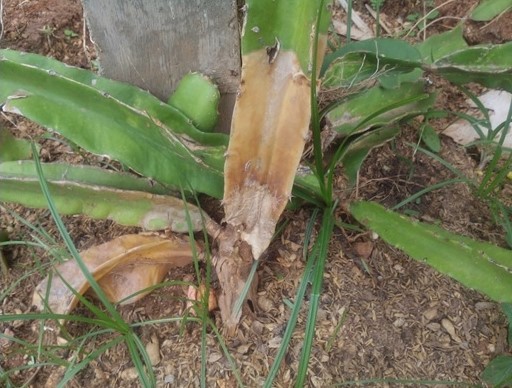
Why It Matters:
Overwatering is the number one cause of root rot. Dragon fruit needs less water than typical fruit plants.
How to Prevent:
- Check soil moisture by inserting your finger 2 inches deep. Water only if it feels dry.
- In hot and dry conditions, watering once or twice a week is sufficient. In cooler seasons, reduce frequency.
- Avoid watering during rainy spells or if the forecast predicts heavy moisture.
5. Choose the Right Location
Why It Matters:
Sunlight and airflow help keep soil dry and discourage fungal growth.
How to Prevent:
- Plant dragon fruit in a sunny spot—at least 6–8 hours of direct sunlight daily.
- Ensure good air circulation around the base of the plant.
- Avoid shaded, low-lying, or swampy areas in your garden.
6. Inspect Regularly for Early Signs
Why It Matters:
Catching root rot early can save your plant before the infection spreads.
Early Symptoms to Watch For:
- Wilting despite moist soil
- Yellowing stems
- Black or mushy base near soil line
- Foul smell from the soil or roots
What to Do:
- Gently remove the plant and inspect the roots.
- Trim off all black, soft, or mushy roots using sterilized pruners.
- Let the plant air dry for 1–2 days in a shaded, ventilated area before replanting in dry, fresh soil.
7. Use a Support Structure to Elevate Growth
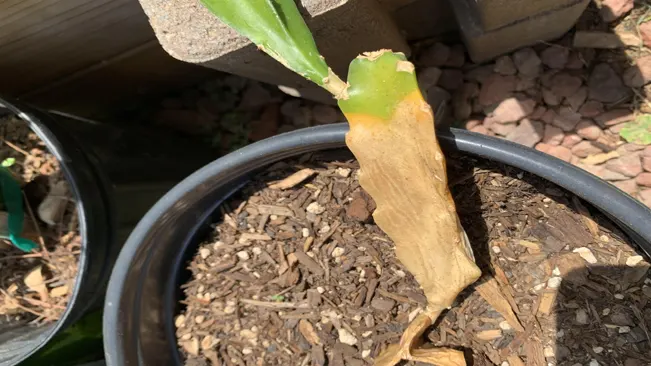
Why It Matters:
A trellis or support pole allows the stems to grow upward, away from wet soil. This also promotes airflow.
How to Prevent:
- Install sturdy trellises or posts when planting.
- Train the plant to climb and keep the base clear of excess growth.
- Prune regularly to avoid tangled stems that trap moisture at the base.
8. Avoid Organic Overload Near the Roots
Why It Matters:
Too much organic material near the roots can retain excess moisture and generate heat as it decomposes, damaging the root system.
How to Prevent:
- Keep compost and organic fertilizers at least 2 inches away from the base.
- Mix organic matter thoroughly into the soil, rather than piling it on top.
- Avoid deep mulching directly around the stem.
9. Sanitize Tools and Cuttings
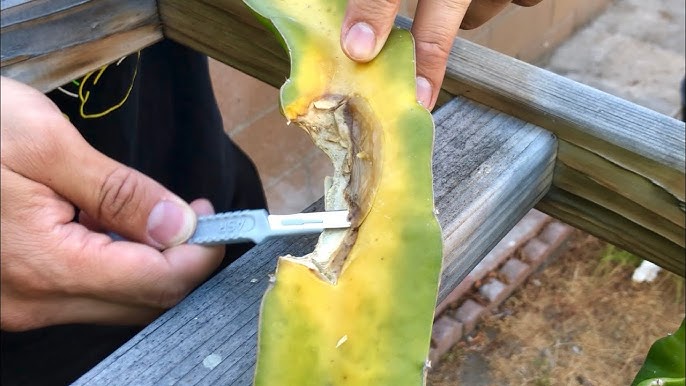
Why It Matters:
Pathogens that cause root rot can spread via infected tools or plant material.
How to Prevent:
- Always sterilize pruning shears, knives, and planting tools with alcohol or bleach solution.
- Allow dragon fruit cuttings to cure for 5–7 days before planting.
- Never plant cuttings with soft, discolored ends — they are likely infected.
10. Use Natural Fungicide or Biocontrols
Why It Matters:
Preventive treatments can help suppress harmful fungi before they cause damage.
How to Prevent:
- Dust the planting area with cinnamon powder or neem cake, both of which have natural antifungal properties.
- Use beneficial microbes or mycorrhizal fungi to colonize the root zone and outcompete pathogens.
- Consider occasional soil drenching with biofungicides like Trichoderma or Bacillus subtilis.
11. Rotate and Rest Planting Areas
Why It Matters:
Planting dragon fruit in the same soil year after year builds up pathogens in the root zone.
How to Prevent:
- Practice crop rotation—plant dragon fruit in a new location every 2–3 years.
- Rest garden beds during off-seasons and plant cover crops that improve soil health and drainage, such as legumes or marigolds.
12. Choose Disease-Resistant Varieties (If Available)
Why It Matters:
Some hybrids and cultivars may show greater tolerance to wet conditions and root pathogens.
How to Prevent:
- Source planting material from reputable nurseries.
- Ask for root rot–resistant or regionally adapted varieties.
- Avoid growing from unknown or potentially infected cuttings.
Conclusion
Root rot may be a serious issue for dragon fruit growers, but it’s far from unavoidable. With the right approach — starting from soil choice and watering habits to trellis support and vigilant monitoring — you can create a healthy environment where root rot doesn’t stand a chance.
By following these top 12 tips, not only will you prevent root rot, but you’ll also encourage faster growth, earlier flowering, and better fruit production in your dragon fruit plant. Prevention is always easier and more effective than treatment, and your dragon fruit’s vibrant vines and sweet harvest will be your reward for that extra effort.
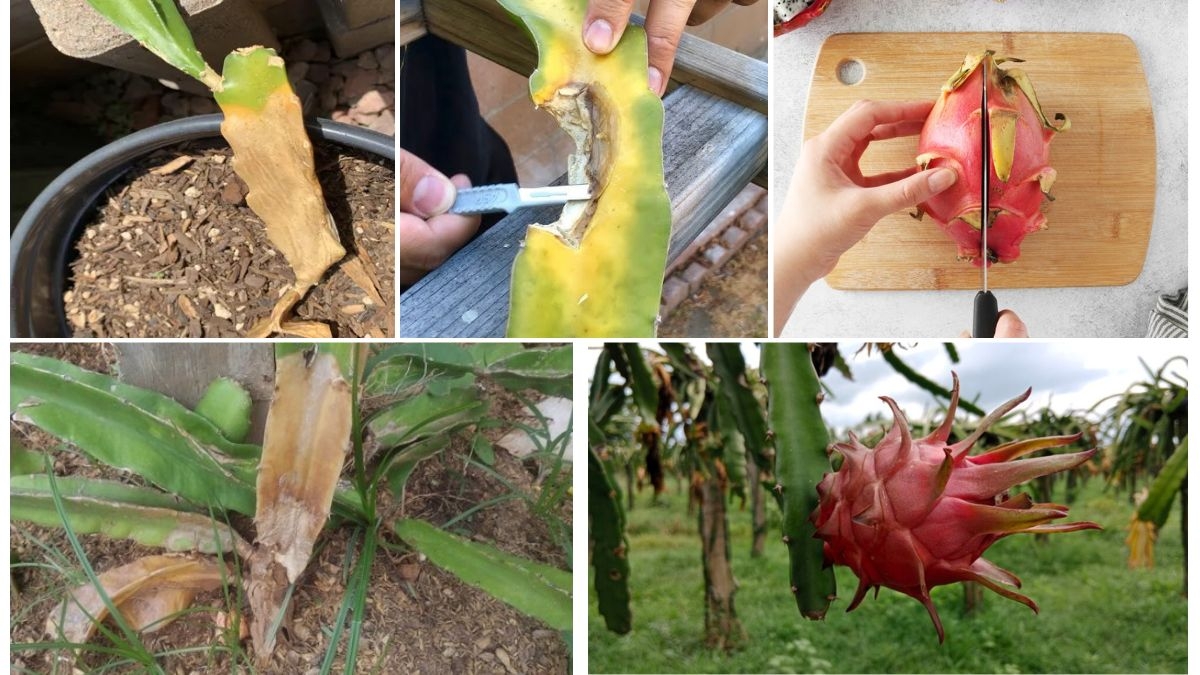




Leave A Comment